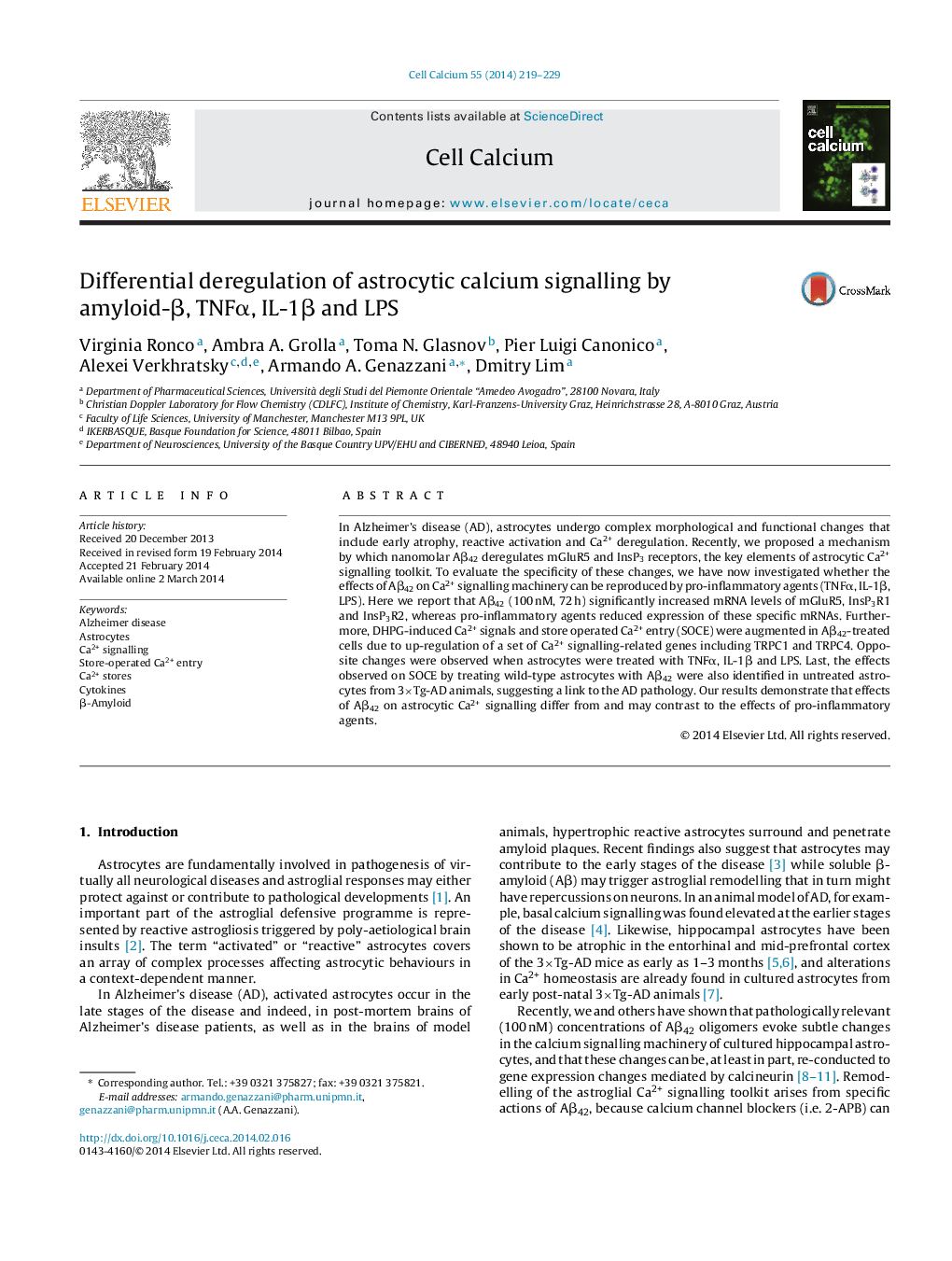| Article ID | Journal | Published Year | Pages | File Type |
|---|---|---|---|---|
| 2165900 | Cell Calcium | 2014 | 11 Pages |
Abstract
In Alzheimer's disease (AD), astrocytes undergo complex morphological and functional changes that include early atrophy, reactive activation and Ca2+ deregulation. Recently, we proposed a mechanism by which nanomolar Aβ42 deregulates mGluR5 and InsP3 receptors, the key elements of astrocytic Ca2+ signalling toolkit. To evaluate the specificity of these changes, we have now investigated whether the effects of Aβ42 on Ca2+ signalling machinery can be reproduced by pro-inflammatory agents (TNFα, IL-1β, LPS). Here we report that Aβ42 (100 nM, 72 h) significantly increased mRNA levels of mGluR5, InsP3R1 and InsP3R2, whereas pro-inflammatory agents reduced expression of these specific mRNAs. Furthermore, DHPG-induced Ca2+ signals and store operated Ca2+ entry (SOCE) were augmented in Aβ42-treated cells due to up-regulation of a set of Ca2+ signalling-related genes including TRPC1 and TRPC4. Opposite changes were observed when astrocytes were treated with TNFα, IL-1β and LPS. Last, the effects observed on SOCE by treating wild-type astrocytes with Aβ42 were also identified in untreated astrocytes from 3ÃTg-AD animals, suggesting a link to the AD pathology. Our results demonstrate that effects of Aβ42 on astrocytic Ca2+ signalling differ from and may contrast to the effects of pro-inflammatory agents.
Keywords
Related Topics
Life Sciences
Biochemistry, Genetics and Molecular Biology
Cell Biology
Authors
Virginia Ronco, Ambra A. Grolla, Toma N. Glasnov, Pier Luigi Canonico, Alexei Verkhratsky, Armando A. Genazzani, Dmitry Lim,
